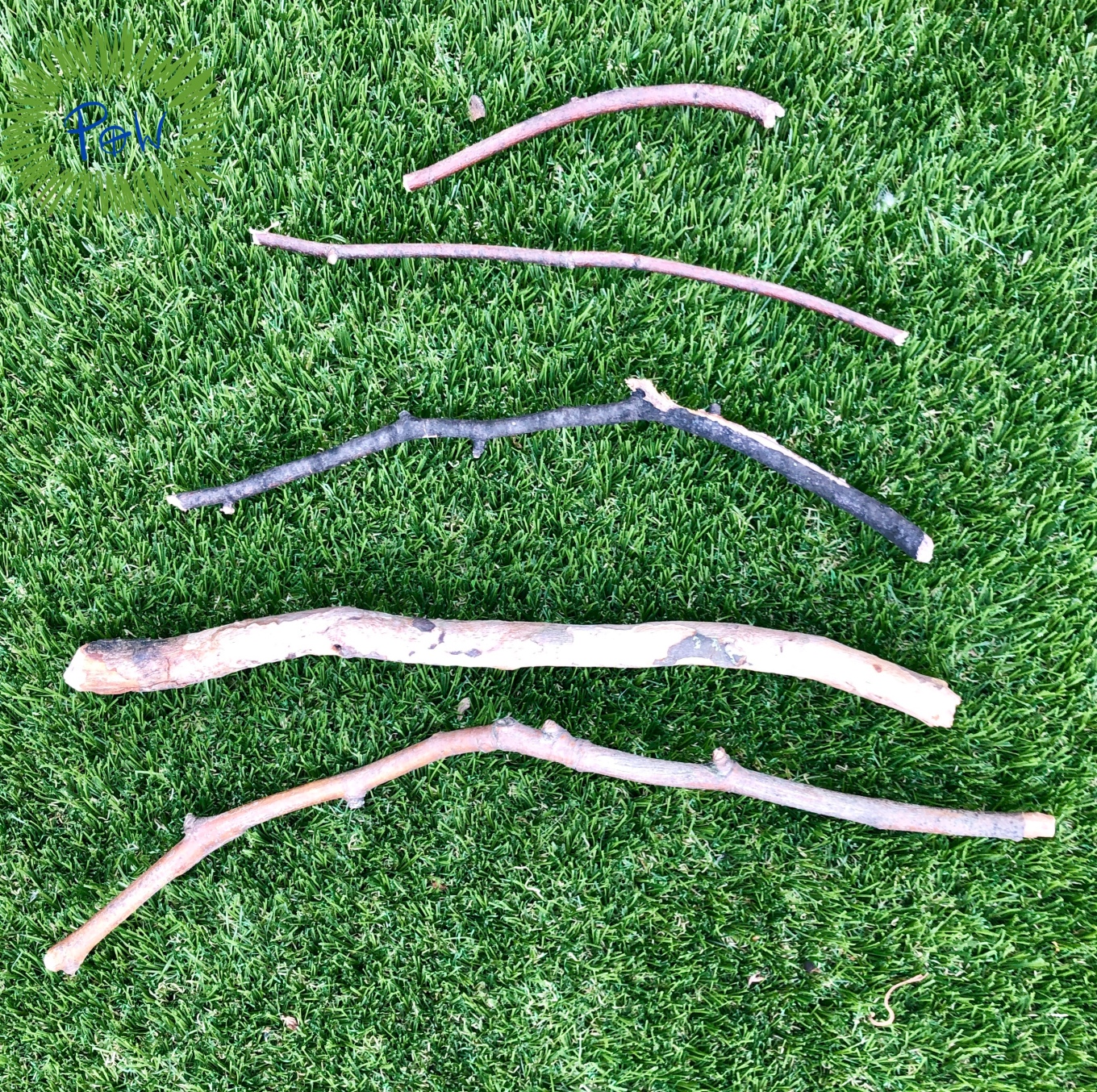Teaching Length to Kindergarten Children Using Sticks

Teaching Length to Kindergarten Children – Ordering Sticks by Length
This post focuses on teaching length to Kindergarten children or children just beginning to learn about measuring with length. When children are first starting to learn about measurement they have no concept of feet, meters, inches, centimetres or any other standard unit of measure and no basic measuring skills. I was surprised when I first started teaching and realised that my year 1 class had no idea where to place a ruler to measure the length of an object. They also had no idea where they needed to look to find the measurement value. That’s when I realised that to get to the point of measuring with standard units, I needed to take it back to basics and start with comparing lengths.
Children love playing with sticks so I like to use them whenever I can. There are many benefits for children learning outside including increased self-confidence, improved social skills and ability to cooperate, improved written and spoken language, improved gross and fine motor skills, increased respect for the natural environment and understanding of the world (Knight, 2013). Teaching outside also engages and motivates children to learn. Using sticks for comparing lengths is an easy way to bring your mathematics lessons outside of the classroom! They can begin to learn about length and size by comparing the lengths of sticks. This is an easy activity to do with children of a wide range of ages. At the most basic level, very young children can compare just two sticks. Which one is the longest? Which is the shortest?

As children’s understanding of length develops, they can compare the lengths of more and more sticks- ordering them from the shortest to longest and longest to shortest. Once they are confident with this, they can move on to measuring with nonstandard units, and then standard units.
What you need for Teaching Length to Kindergarten Children
Sticks! Sticks of different lengths.


Questions to Ask
- Which one is longer/shorter?
- How can you check to make sure?
- Can you show me how you know which one is longer/shorter?
Children may need help making sure they’re judging it correctly– how can you make sure the comparison is fair? (*hint- they may need to start measuring the ends from the same point by placing the ends on the ground)

What they get from it
Children can begin to develop an understanding of measuring lengths by comparing the length/size of sticks. This is great preparation for children to begin measuring with non-standard and then standard units of measurement. If done as a small group activity, children can practice interpersonal skills such as working collaboratively.

Take it further
Once children can order objects by length, they can begin to measure using non-standard units. Children can start to practice measuring skills by using a stick (or something like a hand, footprint, etc.) to measure something with nonstandard units. For example, you could ask- how many sticks tall are you? How many sticks tall is the chair, sunflower, etc.?
They can also begin to learn about standard units of measure by putting sticks together in a line to make 1 foot or 1 meter. See my post coming soon.
You may also want to check out my other posts on using sticks outside for teaching such as my shapes with sticks or chalk clock.
References
Knight, S. (2013). Forest School and Outdoor Learning in the Early Years, Second Edition. Thousand Oaks, CA: SAGE Publications.
Categories

2 thoughts on “Teaching Length to Kindergarten Children Using Sticks” Leave a comment ›